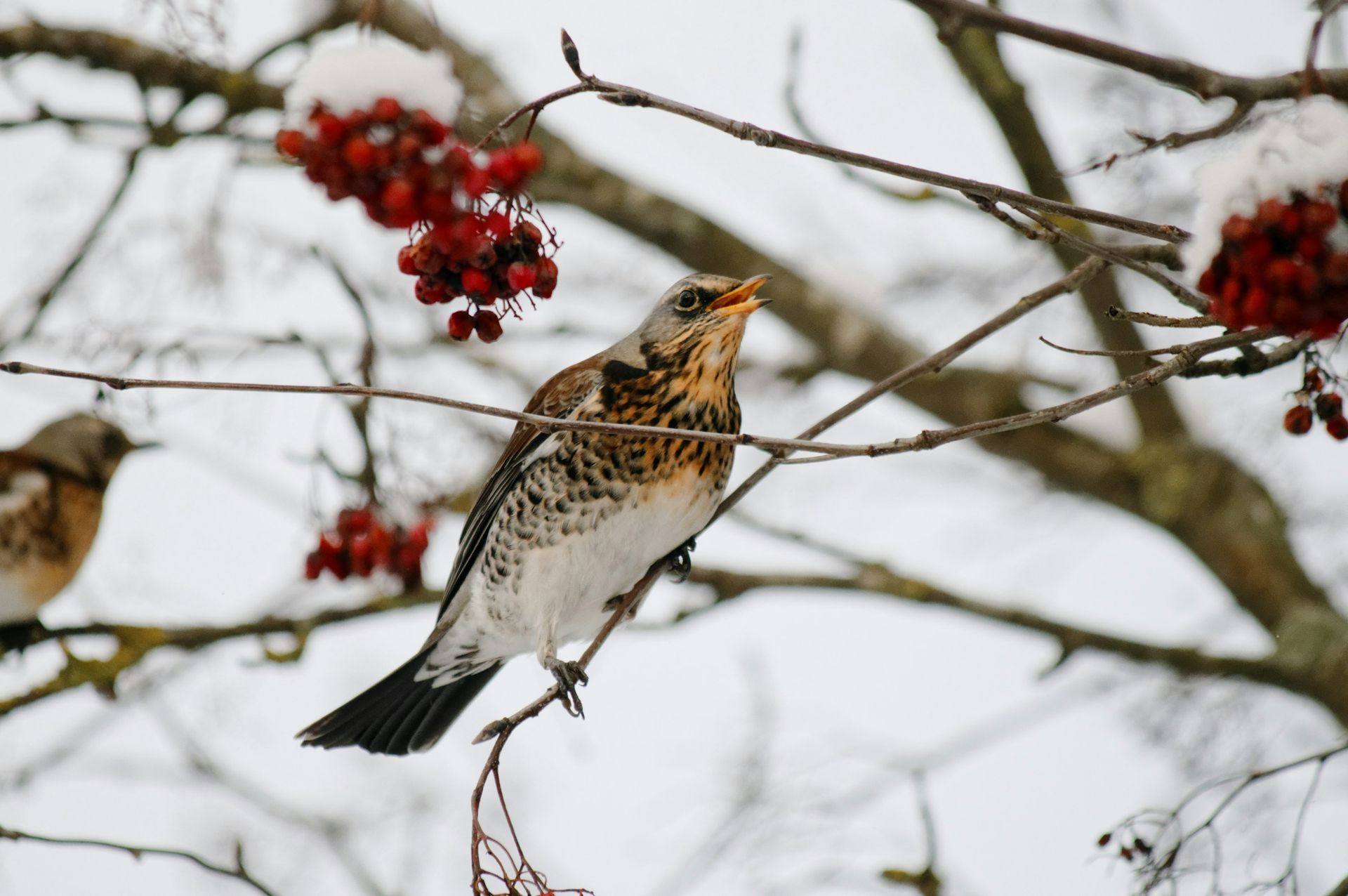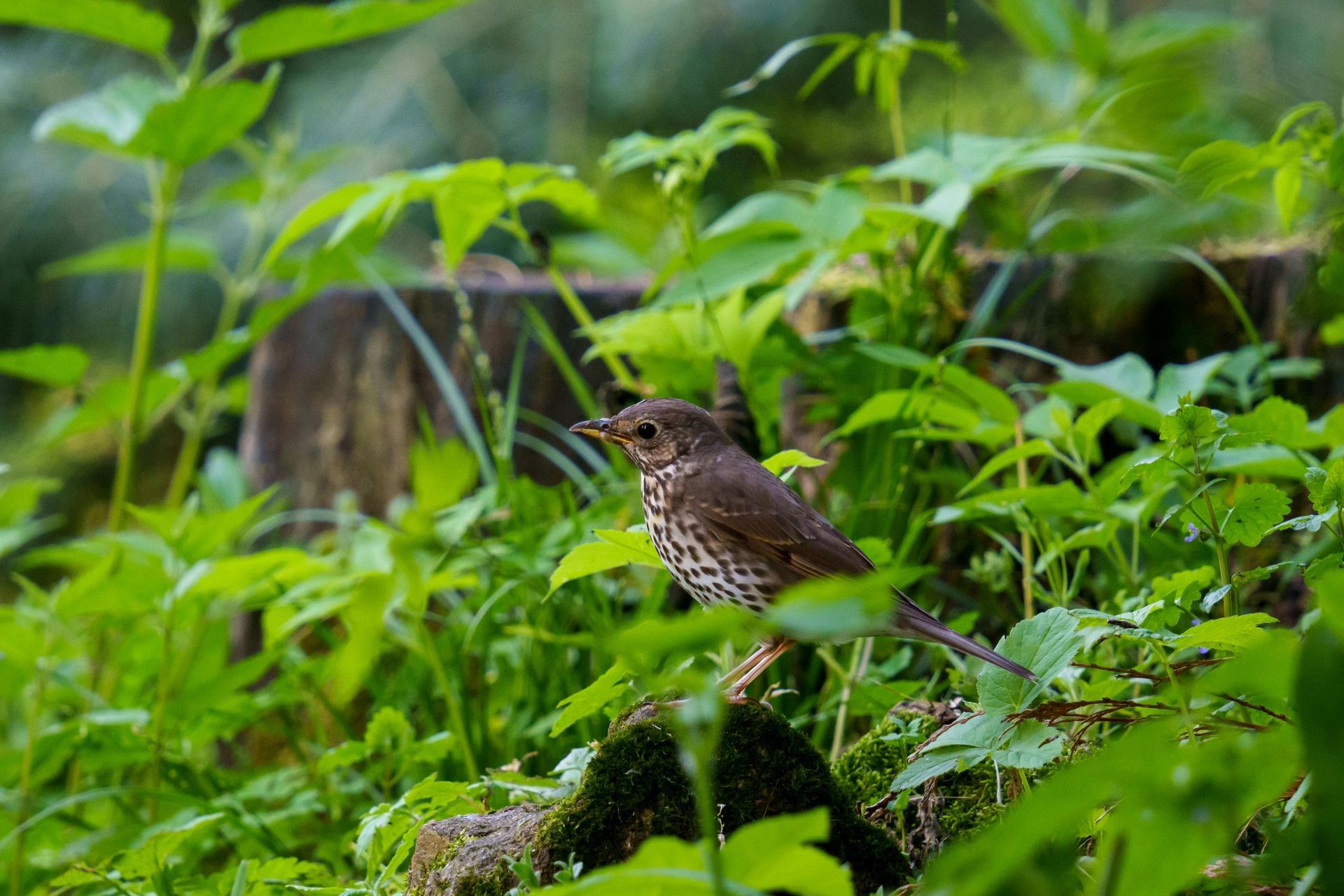Thrushes are medium-sized songbirds known for their melodic songs and spotted breast plumage. Found in woodlands, gardens, and parks across much of the world, thrushes are a vital part of ecosystems, helping control insect populations and dispersing seeds. Common species include the Hermit Thrush (Catharus guttatus) and the American Robin (Turdus migratorius).
Thrushes typically measure between 6-11 inches in length and have a plump body, long legs, and a relatively short tail. Their plumage often features earthy tones such as brown, gray, and olive, with some species displaying bold spots on their chest.
Thrushes feed on insects, berries, and fruits, making them important for plant propagation.
During the breeding season, males sing elaborate songs to attract mates and defend their territory. Nests are built in trees or shrubs, often using grass, leaves, and mud. Females lay 3-5 eggs per clutch, and both parents contribute to feeding the young until they fledge.
Natural predators include hawks, snakes, and domestic cats. Human-related threats such as habitat loss, window collisions, and pesticide use also affect thrush populations. Despite these challenges, thrushes remain resilient and are often found in suburban gardens.

For your safety and the well-being of wildlife, please observe animals from a distance and avoid touching or disturbing them. If you encounter an animal that appears injured or in distress, contact a licensed wildlife rescue organization for guidance before intervening.
Found An Animal? Not sure how to help a wild animal in need? Learn when to step in, who to call, and how to help safely.
Did You Know?
- The Hermit Thrush is known for its ethereal, flute-like song, which is often considered one of the most beautiful bird songs.
- Some thrushes migrate thousands of miles between their breeding and wintering grounds.
- Unlike many birds, thrushes often forage on the ground, flipping leaves to uncover insects.
- Thrushes can recognize individual human faces and adapt their behavior accordingly.
- The Varied Thrush’s call resembles a single, sustained note, often described as haunting.
- Thrushes have been observed using tools, such as leaves, to extract insects from crevices.
- Many thrush species are crucial for spreading the seeds of berry-producing plants.
- Some thrushes form loose flocks in winter, helping them find food more efficiently.
- Some thrush species can detect and remember the location of buried food, using spatial memory to find stored berries and insects.
- Unlike many birds, thrushes can see ultraviolet light, which helps them spot ripe fruit more easily.
Problems Faced In The Wild
- Habitat Loss: Deforestation and urban expansion reduce nesting and foraging areas.
- Window Collisions: Reflective glass poses a significant danger during migration.
- Pesticide Use: Chemicals reduce insect populations and can poison birds indirectly.
- Predation: Free-roaming cats are a major threat to ground-foraging thrushes.
- Climate Change: Altered weather patterns affect migration timing and food availability.
- Competition for Resources: Invasive bird species can outcompete native thrushes.
Tips For Cohabitation
- Plant Native Vegetation: Support natural foraging and nesting by planting native trees and shrubs.
- Avoid Pesticides: Use eco-friendly pest control methods to protect insect populations.
- Install Window Decals: Reduce window strikes by making glass more visible to birds.
- Provide Bird Baths: Thrushes love bathing and drinking from clean water sources.
- Keep Cats Indoors: Protect ground-foraging birds by keeping domestic cats indoors.
- Preserve Natural Spaces: Maintain wooded areas and hedgerows to provide habitat.
- Share Knowledge: Educate your community about the importance of thrushes in controlling pests and spreading seeds.



